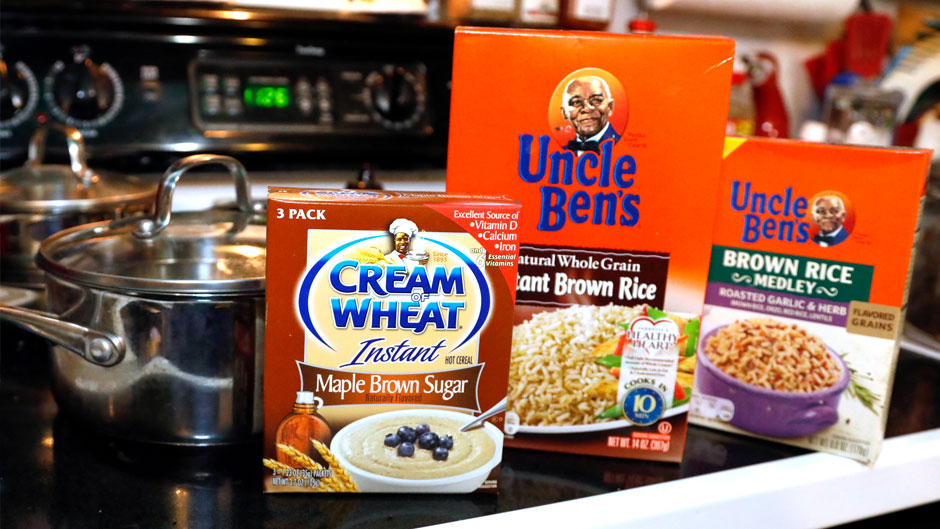In recent weeks, a spate of companies—jolted awake by the Black Lives Matter movement and its stirring of the national consciousness—have moved to alter or retire packaging on products that depict racial stereotyping. Among them are Uncle Ben’s, Mrs. Butterworth’s, Cream of Wheat, Eskimo Pie, and Aunt Jemima.
Claudia Townsend, an associate professor of marketing at the University of Miami Patti and Allan Herbert Business School, explained that rebranding prompted by cultural shifts is not unprecedented, but “the speed of the awakening—all that’s happened within this past month—and the awareness spurring the changes is all very different.”
“Over the past 10 years or so, we’ve seen a period of rethinking on gender roles where brands have responded,” said Townsend, whose expertise focuses on aesthetics and visual presentation in consumer choice.
She referenced Target, which previously marketed separate toy sections for boys and girls that they’ve since merged, and television commercials for home cleaning and childcare products that previously showed only women and now regularly show men mopping, cooking, and caring for toddlers.Townsend also pointed to Dove’s “Campaign for Real Beauty,” which expanded the company’s imagery of beauty to include women of different ages, sizes, ethnicities, and hair type and style.
“Consumers are often fiercely loyal to their favorite products, and even when they may support a branding change, there’s always backlash when a company changes an asset,” Townsend said. “Consumers just don’t like change.”
While there’s no avoiding the criticism, companies can mitigate the pushback by taking other actions, she suggested.
“Overall, consumers have a very short attention span, so the backlash tends to be short -term,” said Townsend. “The question companies should be asking is: ‘How is the consumer going to respond five years from now?’”
Marketing that reflects a company’s stance on a political issue can potentially drive a wedge in its consumer base, she explained.
“When consumers perceive that brands are taking a side, the company is either going to be rewarded by those who support it or rejected by those who oppose it,” Townsend said, referring to the Super Bowl ad a few years ago where a company ran a spot critical of President Donald Trump’s proposed wall along the U.S.-Mexico border.
Another practice that can provoke mixed reactions among consumers is cause-related marketing, where companies partner with a nonprofit and contribute a portion of their product’s purchase price toward the cause.
Michael Tsiros, Patrick J. Cesarano Faculty Scholar and chair of the Department of Marketing, recently published an article in the Journal of Marketing Research that explores consumer perceptions of cause-related marketing.
“The consumer feels more involved and responsible,” Tsiros explained. “Their personal contribution and the impact that they make is definitely important—they want to feel like they’re making a difference.”
Among the first examples of this marketing approach was the American Express campaign in the mid-1970s that donated a percentage of each purchase toward the renovation of the Statue of Liberty, according to Tsiros.
Tsiros said that companies should be more vocal and visible about the causes they support and the upside impact, but they also need to be tuned in to consumer perception of authenticity—whether companies truly support the cause or are simply exploiting a trend.
“Recently we’ve seen a lot of companies doing commercials, telling how they’re supplying personal protection equipment and helping frontline workers, and this has unique circumstances,” he said. “Companies need to be in the news—though this is not something they generally do. There is a stigma that they may be seen as tooting their own horn.”
Perception of authenticity also plays a key role in the response to rebranding, Townsend said.
“‘Is this authentic or are they just paying lip service,’ is a question many customers ask, especially nuanced customers and those who are going to do their research and look at the facts behind the changes,” Townsend said.
“These same customers are also going to demand that the companies do more, in essence that they put their money where their mouth is and take real action—contribute to a cause, promote diversity in leadership, or increase employee salaries,” she said.
While it’s complicated to determine what percentage of customers are conscientious enough to fact-check, Townsend said research shows that millennials—with their considerable purchasing power—are exceptionally cause-driven and ready to financially reward companies they respect.
Among the current rebrandings, Aunt Jemima’s iconic image may be the most challenging of all to retire. Since 1889 the pancake-and-syrup staple has displayed the face of a Black woman—a smiling Black mammy minstrel of the antebellum South—on the box top. The first Aunt Jemima was the image of Nancy Green, who was, in fact, born into slavery, according to news reports.
Townsend explained that a key marketing concept—anthropomorphism, where products assume human characteristics—is at work.
“With Aunt Jemima, even people who understand what’s wrong with this imagery and appreciate why it must be changed are challenged,” she said, “because the image feels like a person, like their sweet aunt who they grew up with.”
For companies rebranding their products, Townsend recommended that even as companies that rebrand their products to shift away from a controversial component, they should preserve all the other facets of the brand that customers recognize.
“Imagery and logos ease the search process for consumers. They make it easy for them to go into the grocery store, down the aisle, spot the Aunt Jemima they’re looking for and grab it,” she explained. “Companies have to keep all the other elements—the shape of the bottle, the colors—the same.
“Yet no matter what they come up with, and even for the consumer who applauds the change, it’s not going to feel the same,” Townsend said. “The love will have to be developed.”

